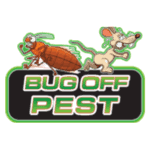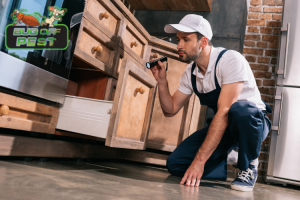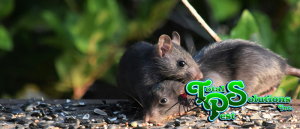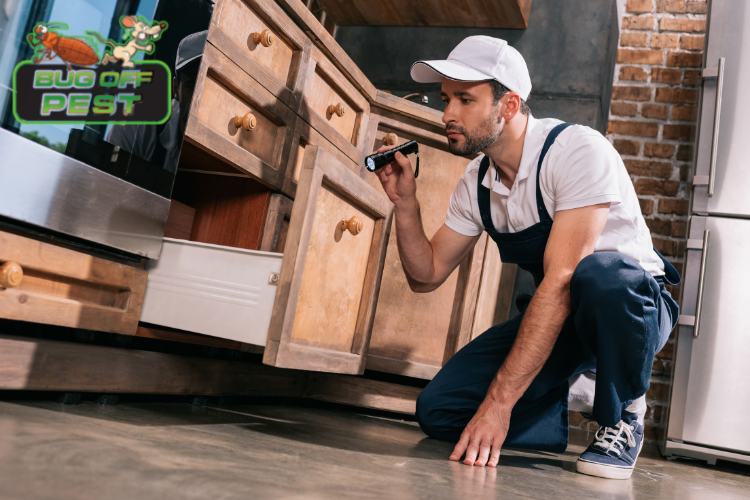Pests in food establishments increase the risk of spreading foodborne illnesses that put diners’ health and safety at risk. The negative ripple effects can have damaging effects on a restaurant’s reputation and the business’s bottom line. To keep pests off the menu, it’s critical to develop solid restaurant pest control strategies and preventative measures.
Why Pests Are a Major Concern in Restaurants
Restaurants are particularly appealing to pests because they have everything pests are looking for: access to food, water, and shelter. Infestations pose a threat to public safety, which is why restaurant owners and staff must work double-time to protect the premises. Otherwise, the long-term impact of pests in food establishments can have devastating effects on the business.
The Impact of Pests on Customer Safety and Business Reputation
Research suggests that more than half of all restaurant patrons will write negative reviews or social media posts after seeing a pest while dining. Additionally, seeing multiple pests or seeing pests near their food increases the odds that customers will never return.
Although the impact on the establishment’s reputation can be harmful, it’s even worse that pests literally put your employees and customers at risk. Pests can carry dozens of different pathogens, potentially contaminating preparation surfaces and the food itself.
Common Pests Found in Restaurants
Although restaurants can end up with any number of pests, three culprits stand out as the most common offenders. Explore each of these pests in a bit more detail to ensure you and your employees know what to look for and how to respond.

Rodents (Mice and Rats)
Rodents are clever critters that are capable of slipping into restaurants through open doors as well as tiny cracks and gaps. Mice and rats can contaminate food and other surfaces with germs that cause Hantavirus and lymphocytic choriomeningitis.
Cockroaches
Cockroaches, including German, brown-banded, and American cockroaches, can be incredibly challenging to control. Cockroaches emit pheromones that attract more insects to the area, and they can easily enter through plumbing, exhaust vents, and incoming supply shipments. These pests seek out tiny cracks and crevices for shelter and reproduction, making it easy to contaminate utensils, surfaces, and equipment with harmful pathogens such as those that cause plague, salmonella, cholera, and more.
Flies
Flies, including house, drain, and fruit flies, leave feces everywhere they land. This poses a high risk of contamination of food and kitchen equipment with germs that can spread salmonella, E. coli, dysentery, typhoid fever, and more.
Why Restaurants Are Vulnerable to Pest Infestations
Restaurants are highly attractive sites for pests. In addition to offering up ample sources of food and water, they have plenty of spots that are suitable for insect and rodent nesting. Restaurants also have doors that frequently open, incoming shipments, and other areas that provide easy access.
Abundant Food Sources
Pantries, refrigerators, and freezers that are filled with ingredients are only a few of the food sources in restaurants. One of the biggest attractants comes from food waste — spills, crumbs, and mismanaged garbage filled with discarded food matter.
Warm, Moist Environments
Debris and moisture can accumulate where drains and floors intersect. Plumbing leaks and dark, damp spaces, including storage spaces and areas beneath or behind equipment, can also attract various pests.
High Traffic and Access Points
Restaurants can be like a revolving door of foot traffic, with patrons entering and exiting frequently throughout the day and night. Each time the door opens, a pest could theoretically slip through and wreak havoc. Other access points may be less obvious. Examples include air ducts, delivery and supply zones, unsealed areas in ceilings and walls, gaps and cracks around utility lines, and vents.

Strategies to Prevent Pests in Restaurants
To win the fight against pests, restaurant owners and employees must take proactive steps. A few of the key strategies for preventing pests include the following:
Proper Food Storage and Handling
Maintaining strict food handling and storage protocols is necessary to pass health inspections. Storing food properly, including in airtight containers, can also reduce the risks of attracting pests.
Maintaining Cleanliness
Sanitation is critical in maintaining a healthy, pest-free restaurant. Cleaning spills, regularly sanitizing behind and under equipment, and sweeping/mopping floors and counters daily can help reduce the restaurant’s pest appeal. Other actions include thoroughly cleaning the following:
- Appliances
- Food contact surfaces
- Walls
- Storage cabinets
- Floor mats
- Seats and tables
- Counters
- Cutting boards
- Service areas
Regular Inspections and Monitoring
The sooner you spot pest activity, the faster you can gain control of the problem. Regular inspections and monitoring pest-prone areas can help catch infestations before they become widespread issues. It’s also the key to shifting strategies that don’t work to ensure maximum effectiveness.
Sealing Entry Points
Blocking access can go a long way to preventing pests in food service environments. Some tips include:
- Seal gaps, cracks, and openings
- Inspect packages and deliveries
- Ensure doors and windows close tightly; install weather stripping as needed
- Replace broken windows, using tightly fitted mesh screening for windows you open
What Are Integrated Pest Management (IPM) Strategies
Integrated pest management (IPM) strategies focus on prevention, first and foremost. IPM for restaurants relies on four primary steps: inspection, identification, treatment, and ongoing partnership with pest pros. This approach advocates for the use of chemical control as needed, with steps like exclusion and other forms of control prioritized.
Importance of Health and Safety Compliance
Pest control makes up about 20% of inspections, which means remaining pest-free is a high-stakes proposition. Remaining within state and local health codes is essential to maintaining a thriving business.
Meeting Regulatory Standards
Although the standards vary from state-to-state, restaurants must have established protocols for managing and preventing infestations. It’s also critical to have documentation of all service visits, inspections, corrective measures, and pesticide use.
Avoiding Fines, Closures, and Damaged Reputations
Failing to meet established health codes and regulatory standards can have costly repercussions. Maintaining a pest-free restaurant can help avoid forced restaurant closures, fines, and the potential loss of business.
When to Call Professional Pest Control Services
Keeping your restaurant pest-free requires constant diligence and proactive monitoring. While the day-to-day operations and preventative strategies require employee training and involvement, partnering with reputable professionals from the beginning is essential. Routine professional pest management services provide regular inspections and expert support in preventing and controlling pests in the event of pest sightings.
Recognizing Signs of Severe Infestations
Ideally, the restaurant already works with pros for regular inspections and treatments. If not, it’s critical to contact the experts at the first sign of any infestation, which could include:
- Strong odors (musty or like decaying food)
- Sighting of live pests
- Droppings in and around sinks, cooking equipment, storage areas
- Damaged food packaging
Contact Catseye Pest Control to Help Keep Your Restaurant Pest Free
When you choose a pest control professional to partner with, it’s vital to select one with a great reputation and a dedicated IPM approach. Catseye Pest Control has been a regional industry leader since 1987. We have earned a solid reputation with our commitment to excellent service and state-of-the-art pest control and prevention services.
Let licensed, experienced experts support your restaurant’s pest control strategy, leaving you with more time to handle other aspects of the business. Contact Catseye today to schedule a free inspection to begin protecting your restaurant from pests.
The post Common Restaurant Pests and How to Prevent Them appeared first on Catseye Pest Control.











